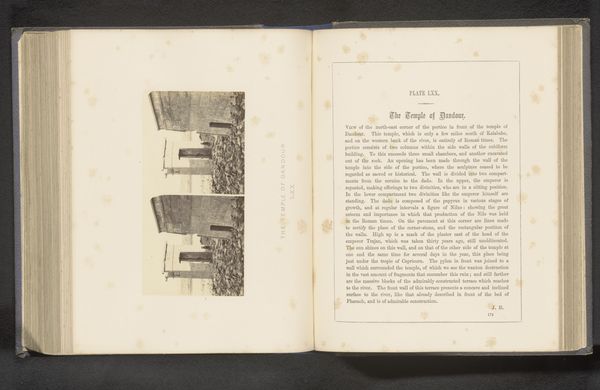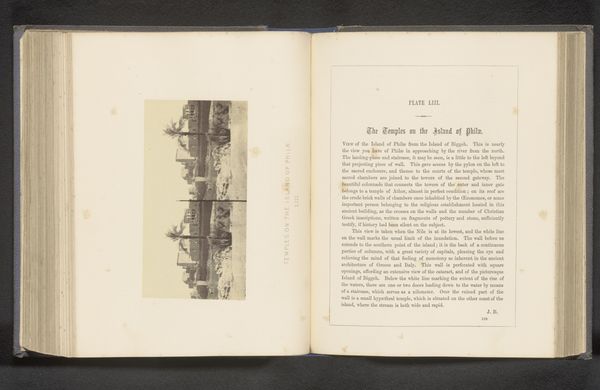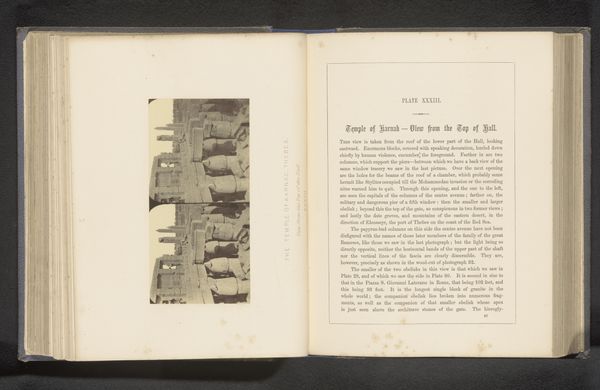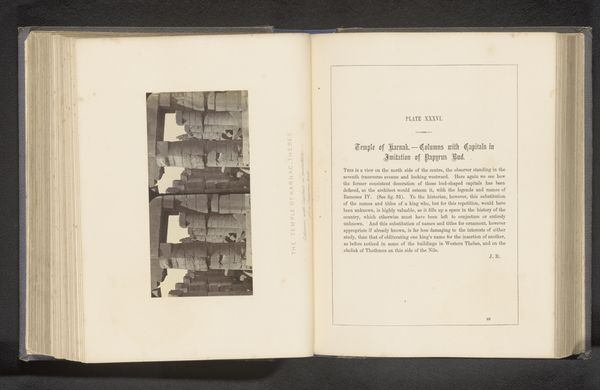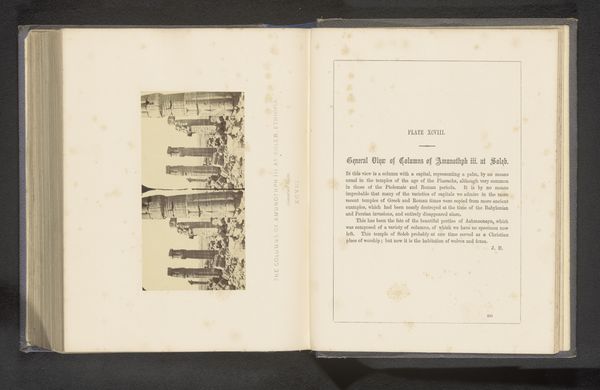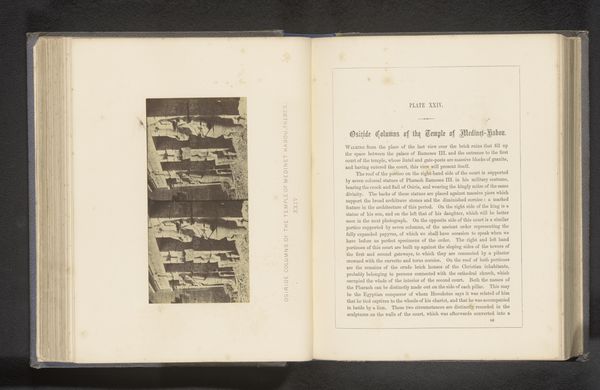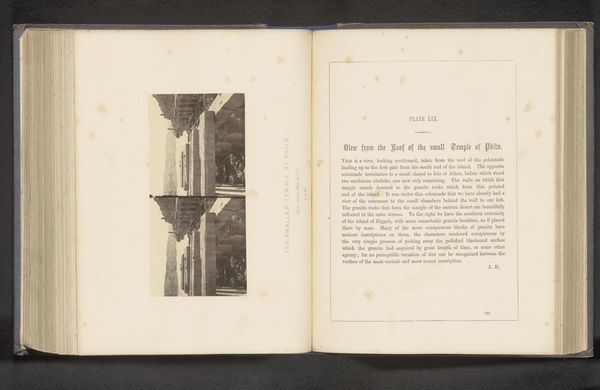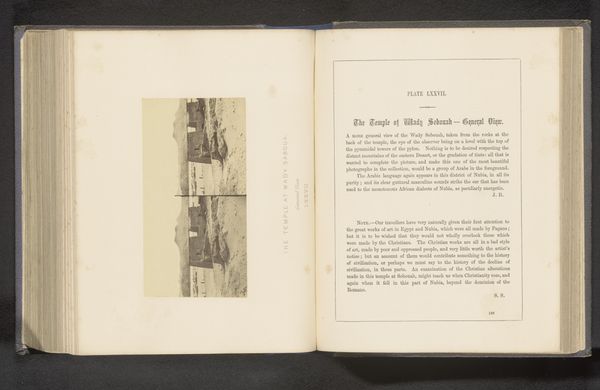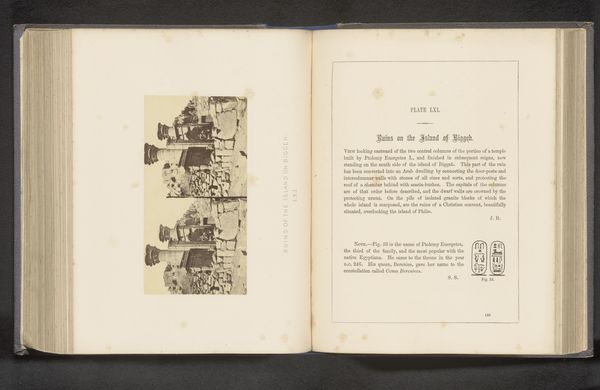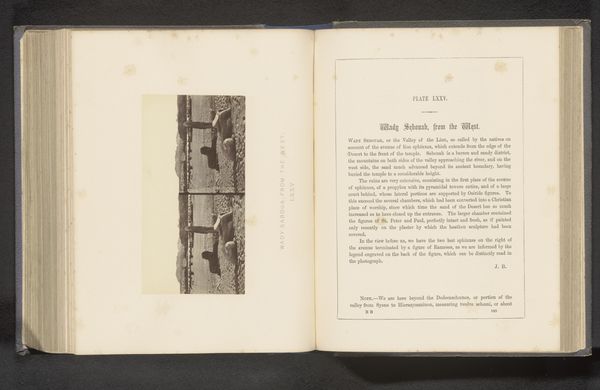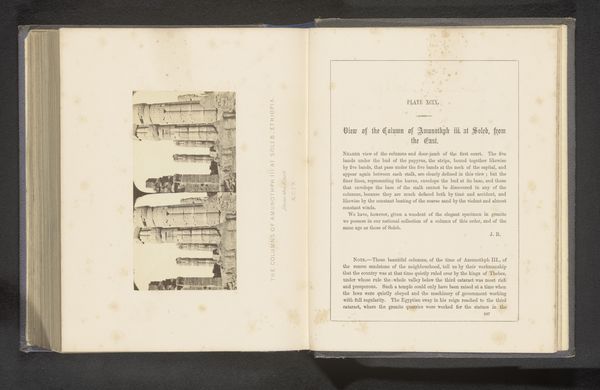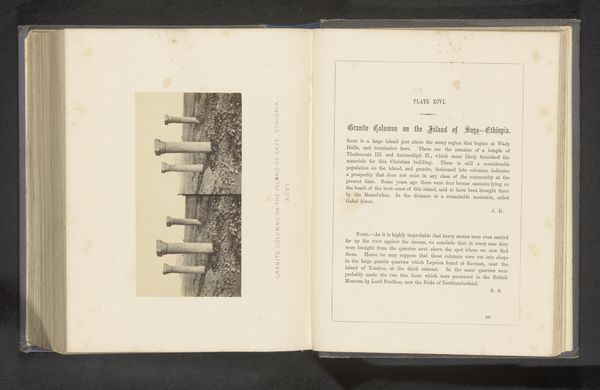
Zuilen met de vorm van het lichaam van Osiris en het hoofd van Ramses II bij de tempel van Ptah bij Gerf Hussein before 1862
0:00
0:00
print, photography, gelatin-silver-print, architecture
# print
#
landscape
#
ancient-egyptian-art
#
photography
#
ancient-mediterranean
#
gelatin-silver-print
#
architecture
Dimensions: height 76 mm, width 144 mm
Copyright: Rijks Museum: Open Domain
This photograph by Francis Frith captures the temple of Ptah at Gerf Hussein, featuring columns sculpted in the form of Osiris with the head of Ramses II. Frith, a pioneer in nineteenth-century photography, often documented sites within the British Empire, reflecting a Western gaze on ancient civilizations. His work provides valuable visual records, yet it's crucial to consider the power dynamics inherent in these colonial-era representations. How does the act of photographing and archiving such sites affect our understanding of ancient Egyptian culture? The temple itself, dedicated to Ptah, the creator god, was commissioned by Ramses II. The columns embodying Osiris, the god of the afterlife, symbolize power, divinity, and the interwoven nature of life and death. Reflect on how the monumental scale of these sculptures evokes awe and reverence, shaping the viewers perception of both the pharaoh and the gods. They reflect and embody societal beliefs, as well as personal connections to these beliefs.
Comments
No comments
Be the first to comment and join the conversation on the ultimate creative platform.
